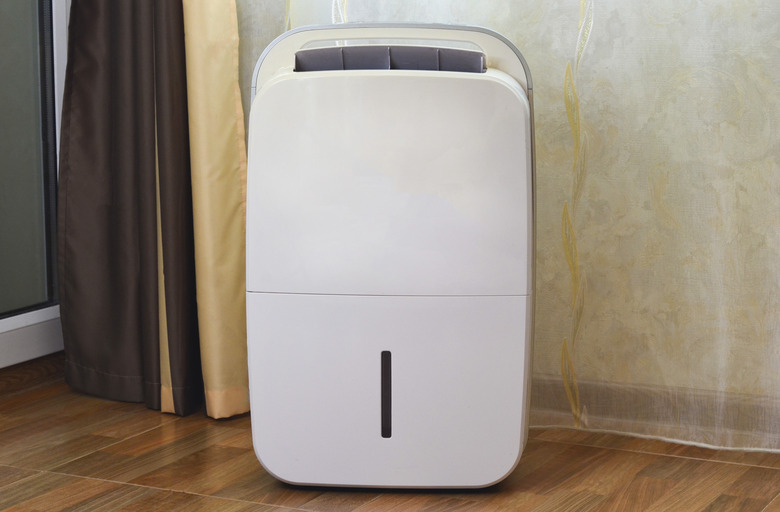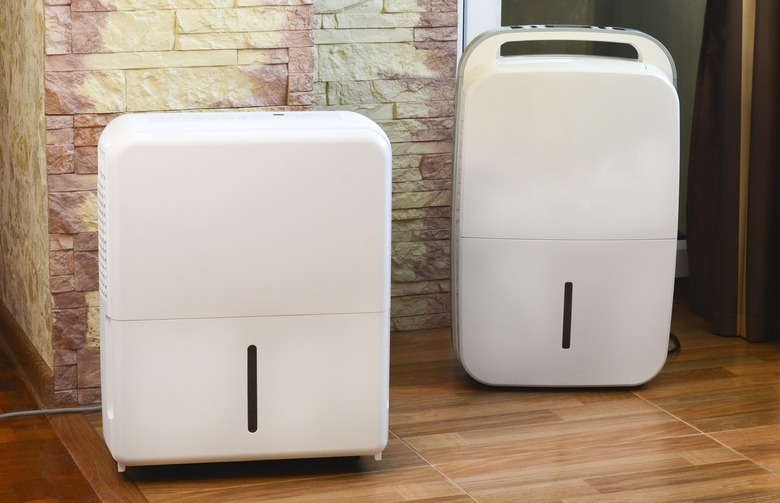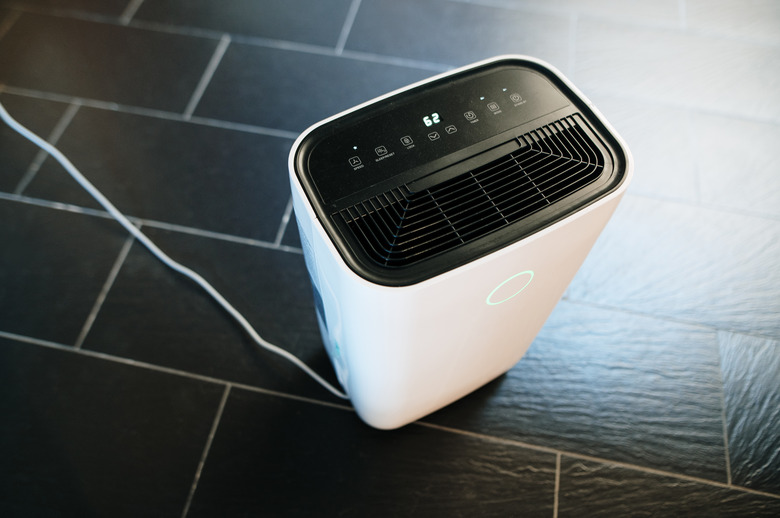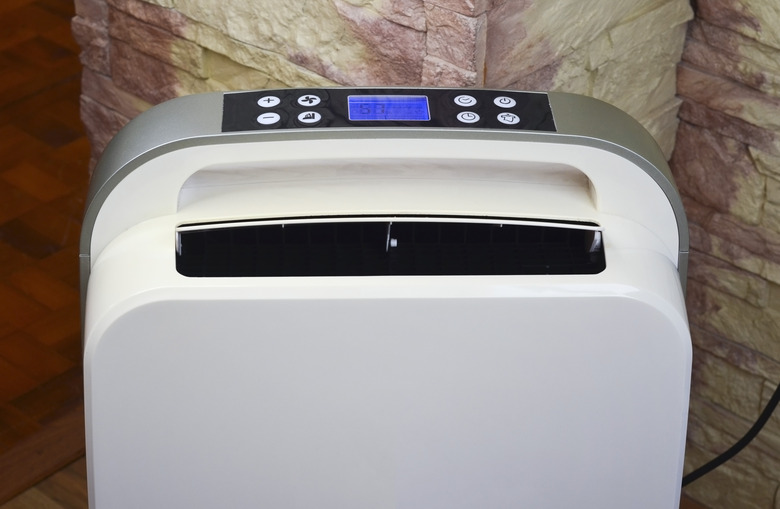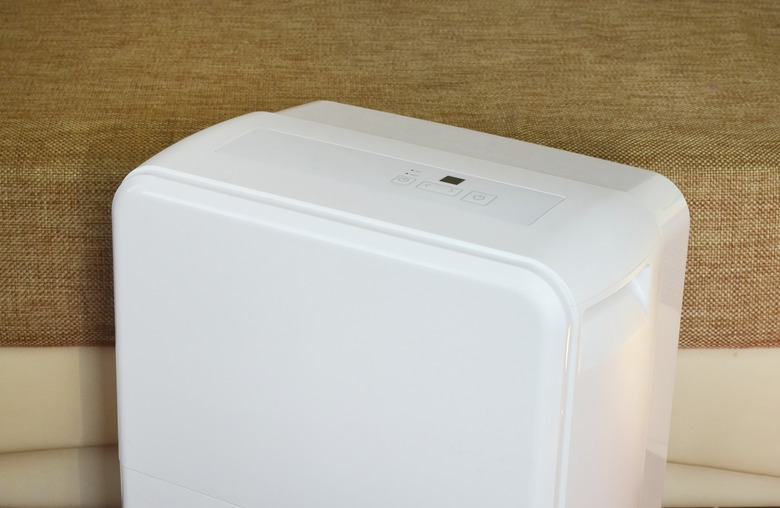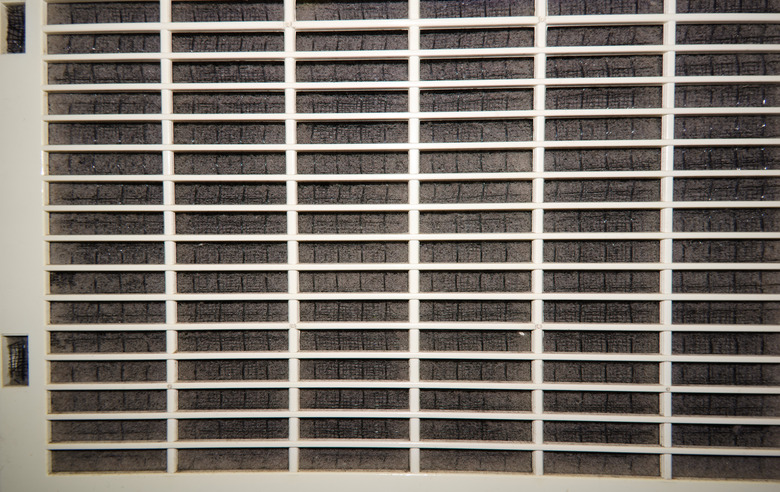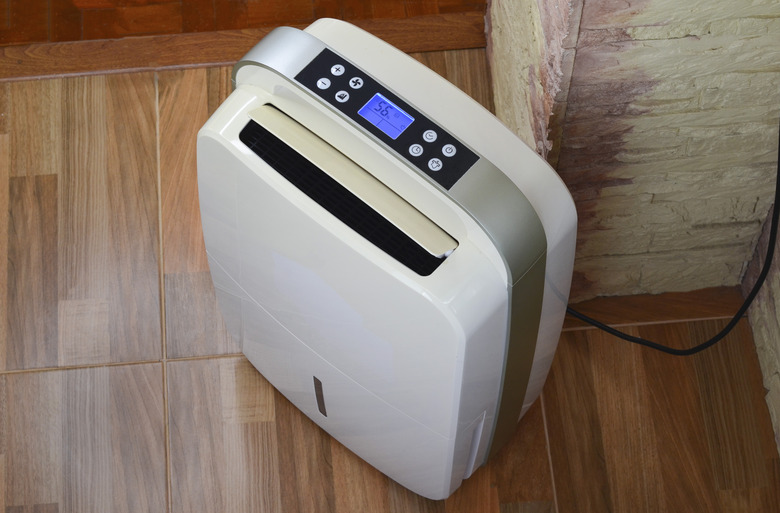How To Clean A Dehumidifier: A DIY Guide
We may receive a commission on purchases made from links.
When it's clean and functional, a dehumidifier improves the air quality in your home by pulling out excess moisture and even some allergens. But when it's overdue for cleaning, a dehumidifier struggles to do its job, and a telltale musty smell develops. This can happen surprisingly quickly. The outside of your trusty dehumidifier looks clean enough, and you can't see the grime building up inside. Out of sight, out of mind! That's why cleaning this appliance has to be something you do regularly.
The best way to clean a dehumidifier is all at once, disassembling the parts and cleaning them individually before reassembling the unit. The good news? This is one of those surprisingly simple home cleaning tasks that you put off and put off ... and then you finally do it, and the whole thing takes 15 minutes of hands-on labor. The parts of a dehumidifier typically don't have to be run through the dishwasher, sanitized with bleach, or cleaned with harsh solvents. All you need are liquid soap, water, and a few other simple cleaning supplies.
Why Should I Clean My Dehumidifier?
Why Should I Clean My Dehumidifier?
There's always something in your home that needs cleaning. With limited time and energy in your day, you're probably inclined to focus your cleaning energy on things that are obviously dirty: dusty corners, grimy counters, etc. If your dehumidifier looks clean enough from the outside, it might not occur to you to give it more than a quick dusting until you smell that musty odor or notice built-up debris blocking its vents.
There are two primary reasons to clean your dehumidifier on a regular basis. The first is efficiency. Over time, the dehumidifier's filter becomes more and more clogged by the particulates it has pulled out of the room air. The machine can't run efficiently when the filter is blocked. You may have to run the machine for longer periods and pay for more electricity in order for your dehumidifier to work with a clogged filter.
The other reason to clean a dehumidifier is for good air quality and safety. The inner components of a dehumidifier stay damp continuously while the machine is being used. It's the perfect environment for mold and mildew to flourish. Although it's not likely that your dehumidifier will spread mold spores, dust mites, and other allergens, keeping it clean and functioning properly helps minimize the presence of these moisture-loving organisms that could affect the health and safety of everyone in your home — especially people with asthma, allergies, and other health conditions.
Before Cleaning Your Dehumidifier
Before Cleaning Your Dehumidifier
Always turn off and unplug a dehumidifier before starting the cleaning process. Optionally, you might want to lay down a drop cloth under a large dehumidifier before cleaning it; otherwise, you might need to clean the floor afterward since cleaning a dirty machine may throw some debris into the air. This is also why it's a good idea to wear a mask during this process, at least while handling the dirty air filter. It would be pretty counterproductive to inhale all those allergens after your dehumidifier worked so hard to filter them out of your air. Anyone with sensitive skin or allergies might want to wear gloves too for good measure.
Also, make sure you're familiar with the components of your unit and how the pieces come apart for cleaning. If this is new to you, search online for the brand and model name plus "manual" to find a digital version of the owner's manual. It should include instructions for taking the components apart as well as care and cleaning guidelines.
How Often to Clean a Dehumidifier
How Often to Clean a Dehumidifier
The general rule of thumb from dehumidifier manufacturers is that dehumidifiers should be cleaned every two weeks. Try to stick to that timeline no matter the humidity levels in your home. Whether you're running the unit 24/7 or using it intermittently during drier conditions, you can help prevent the buildup of mold and other allergens and maintain good airflow by including the dehumidifier in your regular cleaning schedule.
That said, your cleaning schedule might be a little more lax if your unit is set up so that water continuously drains through a hose instead of collecting in the water reservoir. (Homeowners might do this to keep a humid basement from becoming moldy.) The grilles, filter, and outside of the dehumidifier should still be cleaned every two weeks, but you probably don't need to wash the entire water tank each time since it's not continuously wet.
How to Clean Dehumidifier Grilles
How to Clean Dehumidifier Grilles
A typical dehumidifier has multiple grilles, also known as grates or air vents. The largest grille, typically in the front of the machine, is where moist air gets sucked into the dehumidifier. Typically, an additional grille on the top or side of the unit allows dry air to vent back into the room. These areas naturally become dusty and clogged over time, but they're typically made of durable plastic so they're easy to clean.
- Use your vacuum cleaner with its suction attachment to pull dust and debris out of the grilles. (This is optional. If these vents aren't visibly dusty or it's too inconvenient to get out the vacuum, the following steps should suffice.)
- Dampen a cloth and rub a squirt of liquid soap into part of it.
- Wipe down the grilles with the slightly soapy section of cloth.
- Dampen a clean cloth with water and wipe the grilles to remove all traces of soap.
- Let the grilles air dry for a few hours (or overnight) or wipe them dry with a cloth.
How to Clean the Bucket of a Dehumidifier
How to Clean the Bucket of a Dehumidifier
The dehumidifier bucket is the part of the unit that collects the water that's been pulled from your room air. Also called the tank or reservoir, it's the part that you have to pull out and empty every so often (unless you use a hose for continuous drainage). This is one of the key trouble areas where mildew can flourish, so it requires a thorough scrubbing.
- Remove the bucket from the unplugged dehumidifier and move it to a sink. Empty any water that has collected in the bucket. Depending on the size of your kitchen sink and the size of your dehumidifier's water reservoir, you might want to use a laundry sink or bathtub to clean this component.
- Remove any plastic pieces that cover the top of the bucket. Depending on the model, there may be both a cover with a handle and a separate plastic piece called a float, which tells the machine when the tank is full. The float may be held in place by small pins; squeeze the sides of the float together to remove it.
- Squeeze a few squirts of dish soap into the bucket. Add enough warm water to fill the tank about half full.
- Use a cloth or long-handle brush to scrub the soapy water into every crevice of the bucket. Scrub down the outside as well.
- Rinse the bucket and use a dry cloth to dry it.
How to Clean a Dehumidifier Air Filter
How to Clean a Dehumidifier Air Filter
Typically, a dehumidifier filter is a lot like the screen filter you might find in a window air conditioner, but this is the one area where there's the most variation among different models. Some dehumidifiers use a kind of filter made from pleated material inside a frame. Some newer dehumidifiers use HEPA filters and/or have air purifiers, and these filters are often designed to be replaced after several months but not washed. So, don't follow these simple instructions unless you're confident that your filter is designed to be washed.
- Remove the filter. Again, there's some variation from model to model in terms of how this is done, so refer to the manual if necessary. Does your dehumidifier have a front grille with a water tank below it? While the water tank is removed, reach into the empty space and pull down the filter.
- Rinse the filter under running water until all debris is gone. Use a clean toothbrush or soft-bristle brush if necessary to loosen all that gunk.
- Set the filter on a clean towel in a sunny spot and let it air-dry completely before putting it back in place.
Some manufacturers say it's also safe to clean the filters with a vacuum cleaner. But while your vacuum's suction hose might be powerful enough to suck up a lot of the debris clinging to the filter, you'll probably still want to rinse the filter under running water.
How to Clean the Exterior of a Dehumidifier
How to Clean the Exterior of a Dehumidifier
The exterior of your dehumidifier is probably the easiest part to clean and also maybe the least important part — from an air quality perspective, at least. But no one wants to look at a dusty appliance. While the filter and bucket are still removed from the dehumidifier, simply wipe down all surfaces with a damp cloth.
Once all the components are clean and dry, slide the filter and bucket back into place. Your dehumidifier is ready to be plugged in and go back to work for another two weeks!
